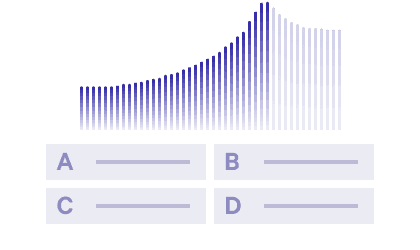How to Land a McKinsey Internship: Application, Interview, and Insider Tips
Learn how to land a McKinsey internship with expert tips on the application, interviews, resume, and PEI, plus insider advice from former consultants.
Posted July 25, 2025

Join a free event
Learn from top coaches and industry experts in live, interactive sessions you can join for free.
Table of Contents
Landing a McKinsey internship could be one of the toughest but most rewarding experiences of your early career. These opportunities, whether as a summer business analyst internship for undergrads or a summer associate internship for MBA candidates, are highly competitive, attracting top students around the world.
In this guide, we’ll walk you through every step of the McKinsey internship application process, the interview process, and what sets successful candidates apart.
What Is a McKinsey Internship?
A McKinsey internship is a competitive 8–10 week program where interns join real consulting teams to help solve complex client problems. You’ll work on live engagements, building models, conducting interviews, and presenting findings, while gaining hands-on experience alongside full-time consultants.
Interns start preparing with formal training, then dive into project work, supported by mentors and team leads. The program also includes social events and exposure to firm leadership. McKinsey offers internships across most global offices, including San Francisco, London, and Dubai, primarily in the summer.
There are tracks for undergrads (summer business analyst internship), MBAs (summer associate internship), and advanced degree candidates. As part of the MBB trio, McKinsey’s internship is among the most prestigious in highly selective consulting, but a powerful path to a full time position.
Read: What is Management Consulting?
Who Can Apply for a McKinsey Internship?
Eligible programs
McKinsey offers a few tracks for their internship program:
- Undergraduate (Junior Summer Business Analyst Internship): Designed for high-achieving juniors with strong analytical skills, presentation skills, extracurricular activities, and leadership exposure.
- MBA (Summer Associate Internship): For first-year MBA candidates seeking hands-on consulting under experienced consultants.
- Advanced Degrees (PhD, JD, MD): Suited for research-savvy candidates keen on data analysis and deep-dive projects.
Office-Based vs. Program-Specific Internships
Most McKinsey internships are office-based, meaning you apply directly to a specific geographic office like New York, Chicago, or San Francisco, and work on client engagements led by that team. Your experience will be shaped by the industries and clients served by that office, and your offer (if extended) is tied to that location.
In contrast, McKinsey also offers program-specific internships that are more centralized and targeted. One example is the Sophomore Diversity Leaders Internship, which is designed for high-performing college sophomores from underrepresented backgrounds. These programs often combine structured training, mentoring, and limited client exposure, and are only offered in select major cities. They serve as early pipelines into the internship program and broader consulting roles.
How to Make Your McKinsey Internship Application Stand Out
Resume Tips
When applying to McKinsey, you must know that your resume is the first real test of your thinking and communication. Every bullet had to prove you could solve complex problems, communicate with clarity, and drive results. It’s not about padding your resume; it’s about showing you think like a consultant.
Here’s what worked for me and what I’ve seen work for dozens of other successful candidates:
Lead with outcomes. McKinsey looks for impact above all. Don’t just say what you did, show what changed because of it. Instead of “Led weekly meetings for student club,” say, “Launched a new initiative that grew membership by 40% and secured $5K in funding.”
Highlight real problem-solving. Think back to moments where you had to fix something broken, design a new process, or make a tough decision with incomplete data. Those experiences, whether in internships, class projects, or your side hustle, are gold.
Quantify everything. Numbers show you understand value. Use them wherever possible: revenue generated, hours saved, people impacted, KPIs moved.
Include analytical and communication skills. If you’ve done any data analysis, market research, or strategic planning, make it explicit. If you’ve presented to senior stakeholders, taught others, or pitched a project, say so. That’s what real client work involves.
If you’re unsure where to start, grab our Consulting Resume Guide or book a coaching session with an expert for live feedback, because getting this part right sets up everything else.
Cover Letter Strategy
Yes, McKinsey still reads cover letters, especially when you don’t come from a target school or consulting feeder. Your letter is where you get to sound like a person, not just a polished resume.
The best ones I’ve read (and written) do three things:
Show why McKinsey. This should be specific. Mention a recent McKinsey project or insight that resonated with you, or something a consultant shared that stuck with you. (Hint: scroll their “McKinsey Insights” page for ideas.)
Tell a story. Pick a quick example that shows your leadership style or how you think under pressure. Something real, not rehearsed.
Explain your fit. Don’t rehash your resume, but connect the dots. Show how your background has built the toolkit McKinsey values.
Close with purpose. End your letter with a sentence that signals both gratitude and momentum. Something like: “Thank you for considering my application. I’d be excited to bring my skills to McKinsey this summer and contribute to a team that’s solving real-world challenges at scale.”
If your story doesn’t fit neatly into one page, cut the fluff, not the authenticity. Strong writing is part of the test.
Read: McKinsey Cover Letter: Tips & Examples
Networking and Referrals
Referrals aren’t required, but they can completely change your odds. Mine came from a second-year MBA whom I cold-emailed after reading her article about interning in the Dubai office. She ended up reviewing my resume, connecting me to a recruiter, and giving me one of the most useful pieces of advice I heard all year.
Don’t just spray LinkedIn messages, be intentional:
- Reach out to alumni who interned at McKinsey or now work full-time.
- Ask former McKinsey interns from your campus what helped them most.
- Attend info sessions and actually follow up with the consultants who speak.
Some applicants even landed a referral by sending a thoughtful note to someone after seeing them speak at a virtual panel. Relationships don’t have to be long-term! They just have to be real.
McKinsey Internship Interviews: What to Expect
Case Interviews
McKinsey uses a unique interviewer-led case format. Unlike the “candidate-led” cases you might practice for BCG or Bain, here the interviewer controls the flow. You’ll still be expected to drive the thinking, but they’ll steer the structure, dropping questions, data, or prompts at each stage.
A typical case might start with: "Our client is a European airline that’s losing market share. How would you approach understanding what’s going wrong?"
You’ll then be guided through analyzing data, one layer at a time.
What’s tested:
In a McKinsey case interview, you're being tested on three core dimensions: structured thinking, analytical ability, and communication. First, they want to see if you can take an open-ended, ambiguous business problem and break it down into a logical, structured approach.
Second, your analytical skills will be pushed, often through on-the-spot mental math like market sizing, breakeven analysis, or profitability breakdowns. You’ll need to stay calm under pressure, walk through your calculations out loud, and be precise.
Finally, they’re looking at how clearly and concisely you communicate your thinking. Can you explain complex issues in plain language? Can you synthesize your findings into a recommendation? It’s the combination of logic, math, and presence that signals real consulting potential.
This is less about “knowing the right answer” and more about showing how you think. McKinsey interviewers are trained to look for clarity, logic, and business intuition.
Read: McKinsey Interview Overview: Case, PEI, & What to Expect
PEI (Personal Experience Interview)
Most candidates underestimate this part, and it costs them the offer.
McKinsey’s PEI is not a casual “get to know you” chat. It’s a high-stakes, behavioral interview where each question probes for evidence of specific leadership behaviors. You’ll get one story, one interviewer, one theme, and they’ll go deep sometimes for 30 full minutes.
Core themes:
McKinsey’s PEI revolves around three core themes, each designed to reveal how you lead, collaborate, and drive results under pressure. These aren’t vague prompts; they’re laser-focused behavioral questions that expect real, specific evidence.
- Leadership questions test whether you can take ownership in high-stakes, often ambiguous situations. Think: “Tell me about a time you led a team through a challenge.” Your story should show not just that you were in charge, but that your leadership moved the needle, motivated others, made decisions, and delivered outcomes.
- Conflict questions uncover how you handle disagreement, especially when the stakes are high or when you’re dealing with someone more senior. A strong response to “Tell me about a time you disagreed with someone and how you handled it” should reflect emotional intelligence, adaptability, and the ability to influence without authority.
- Personal Impact is the most misunderstood, as just about being impressive, but it’s more about showing initiative. When they ask, “Tell me about a time you pushed beyond your authority to make change happen,” they want to see courage, bias for action, and persistence. You didn’t wait for permission; you saw a problem and made something better.
What makes the PEI especially tough is that interviewers will interrupt, challenge assumptions, and dig deep, sometimes returning to the same moment three or four times. You can’t fake your way through it. Every detail needs to be true, relevant, and revealing. Treat this like a mini case study about yourself, and prepare it with the same intensity.
Expert tips for PEI success:
You need to go beyond surface-level reflections: what specifically did you do? What changed? What did you learn?
Use the STAR framework (Situation, Task, Action, Result) but add reflection to show maturity. Generic takeaways or vague outcomes won’t cut it, so be concrete and use numbers where you can, and avoid sounding rehearsed.
Your best stories will map to McKinsey’s core values: ownership, collaboration, and pushing for meaningful change. Practice aloud, ideally with someone who knows what they’re listening for, and get comfortable thinking on your feet.
How to handle case nerves and PEI pressure:
Nerves are normal, especially when you're interviewing with a firm as selective as McKinsey. But how you manage that pressure can actually become part of what sets you apart. In case interviews, nerves often show up as rushing, freezing on math, or losing your structure. The fix? Slow down. Literally. Take a deep breath before you speak, and give yourself a few seconds to outline your thoughts. It’s perfectly acceptable (and expected) to ask for a moment to think. Practicing out loud under realistic conditions with a timer, pen and paper, and a mock interviewer can train your brain to stay calm when it counts.
For the PEI, pressure shows up differently: rambling, forgetting your story, or getting thrown off by follow-up questions. The key here is knowing your stories inside out and internalizing the beats so you can flex and respond in the moment. Practice retelling them in different orders, with different follow-ups. Most importantly, remind yourself that the interviewer is trying to understand how you think, lead, and reflect under pressure. Show them that, and you’re already ahead.
Read: McKinsey PEI Questions: What They Are and How to Answer
What Happens After the Internship
What Interns Actually Do
During the 8–10 week internship program, McKinsey treats you like a real team member, because you are one. Most interns work directly on a client engagement, often on-site, and are staffed alongside full-time consultants, engagement managers, and sometimes even experienced consultants. You’ll contribute to real deliverables: building models, conducting interviews, synthesizing insights, and drafting client presentations. You’ll present your work in team meetings, iterate on feedback, and even take part in client calls. The pace is fast, and the hands-on experience mirrors what you'd be doing as a business analyst or associate post-MBA.
While the workload is intense, the internship is also designed to support your growth. You'll receive structured onboarding training, mentorship from your team, and a mid-point feedback session. Compensation reflects the level of responsibility, and a McKinsey internship salary is among the highest in the industry, often prorated from full-time consultant pay, and can include bonuses depending on office and performance.
Path to Full-Time: What Determines Whether You Get the Offer
McKinsey doesn’t hide the stakes: this internship is a two-month audition for a full-time position. Most interns do receive return offers, but it's not automatic. You're evaluated holistically on your work and also on how you show up.
Here’s what matters most:
- Clarity and strategic thinking. Can you frame problems, communicate your logic, and tailor your message to senior clients?
- Impact and ownership. Did you go beyond what was asked to push the team’s thinking forward? Were you a self-starter, or did you need hand-holding?
- Team contribution. McKinsey is a team sport. Interns who build real camaraderie, who are coachable, proactive, and positive, stand out.
- Presentation skills. You’ll often be asked to share findings in team meetings or contribute to decks for the client. How well you distill ideas and present them under pressure matters.
Some offices also award a performance bonus at the end of the internship, especially in major cities like San Francisco, as a sign of strong potential. And yes, many interns not only return full-time but eventually move into senior roles, lead client work, or pivot into leadership positions across industries.
Expert tip to convert the internship into a full-time role: Treat every meeting, every task, and every late-night slide as part of the audition. Be sharp, collaborative, and coachable.
Read: The Ultimate Timeline for Full-Time Consulting Recruiting
Key Takeaways
- The McKinsey internship is one of the most highly competitive roles in consulting, whether you’re applying for the summer business analyst internship, summer associate internship, or a spot in a specialized internship program.
- A standout application requires a sharp, impact-driven resume, a tailored cover letter, and strategic networking opportunities—especially if you’re not from a traditional feeder school.
- The interview process is rigorous and includes both interviewer-led case interviews and the high-stakes Personal Experience Interview (PEI)—each testing critical analytical skills, problem solving, and communication under pressure.
- During the internship, you'll gain real hands-on experience working with clients on strategy and implementation, often on-site at a client site alongside full-time consultants.
- Conversion rates are strong, but not guaranteed. Offers for full-time positions depend on your performance, impact, teamwork, and presentation skills.
Land a McKinsey Internship with 1:1 Coaching
To really give yourself the edge, work with a management consulting expert to perfect your resume, sharpen your case strategy, and walk into interviews fully prepared.
See: The 10 Best Consulting Coaches for Case Interviews & Resumes
Read these next:
- Management Consulting Firms: An Overview of the Top Players
- A Comprehensive Guide to MBB: McKinsey & Co., Boston Consulting Group, and Bain & Co.
- How to Succeed in a Consulting Career - An Expert Coach's Guide
- McKinsey Solve Game: What it Is & How to Beat It
- How to Write the Best Follow-Up Email After the Interview (With Examples & Template)
- McKinsey Associate Salary Breakdown
FAQs
How hard is it to get a McKinsey internship?
- The McKinsey internship is one of the most competitive programs out there, with acceptance rates often under 2%. You’re up against top students from around the world. But if you have strong academics, real impact on your resume, and prep smartly for the interviews, you absolutely have a shot.
Can I still get in if I’m not from a target school?
- Plenty of interns come from non-target schools. But you’ll need to be more strategic. That means a standout resume, a tailored cover letter, strong networking, and prep that shows you're just as polished as someone from a traditional feeder. A referral can help a lot here.
What’s the internship like day to day?
- No two days are the same, but most interns spend their time working directly on a client project—doing data analysis, building slides, joining meetings, and solving real problems with their teams. You’ll likely be working long hours (40–60 hours/week), but you’ll also get training, mentorship, and real exposure to how consultants operate.
Do McKinsey interns get paid?
- The typical McKinsey internship salary ranges from $6,700 to $9,000 per month for undergrad roles, and MBA internships earn approximately $16,000–$17,000 for the summer. That’s often pro-rated from full-time business analyst or associate salaries. Some offices may also offer performance bonuses.
When should I start preparing for the application process for McKinsey?
- Ideally, 3–6 months before the deadline. You’ll need time to craft your materials, network, and practice case interviews and PEI stories. Starting early gives you space to iterate and reduce stress.
Browse hundreds of expert coaches
Leland coaches have helped thousands of people achieve their goals. A dedicated mentor can make all the difference.
























